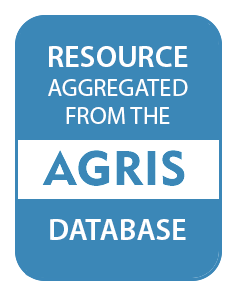About Springer
Throughout the world, we provide scientific and professional communities with superior specialist information – produced by authors and colleagues across cultures in a nurtured collegial atmosphere of which we are justifiably proud.
We foster communication among our customers – researchers, students and professionals – enabling them to work more efficiently, thereby advancing knowledge and learning. Our dynamic growth allows us to invest continually all over the world.
We think ahead, move fast and promote change: creative business models, inventive products, and mutually beneficial international partnerships have established us as a trusted supplier and pioneer in the information age.
Members:
Resources
Displaying 356 - 360 of 1195Combining asset- and species-led alien plant management priorities in the world’s most intact Mediterranean-climate landscape
Minimising the spread and impact of alien plants is a crucial component of land management for biodiversity conservation. Alien plant management typically focuses on either controlling selected alien species (‘species-led’), or on minimizing invasions within selected biodiversity or cultural assets (‘asset-led’). Here, we compare and combine species- and asset-led approaches to prioritise alien plant management activities in the world’s largest Mediterranean-climate woodland, located in south-western Australia.
Legacy Effects of Different Land-Use Histories Interact with Current Grazing Patterns to Determine Grazing Lawn Soil Properties
Pastoralism and agriculture have affected rangeland ecosystems over the past millennia, including many ecosystems that are currently protected as reserves. However, the legacy of these land-use practices on current ecosystem functioning remains unclear. We studied legacy effects of former human land use on soil physical and chemical properties in a South African savanna.
National Assessment of Stressors to Estuarine Fish Habitats in the Contiguous USA
Estuaries provide vital habitat to a wide variety of fish species, so understanding how human activities impact estuarine habitats has important implications for management and conservation of fish stocks. We used nationwide datasets on anthropogenic disturbance to perform a quantitative assessment of habitat stressors in US estuaries. Habitat stressors were characterized by four categories of indicator datasets: (1) land cover/land use, (2) alteration of river flows, (3) pollution sources, and (4) eutrophication.
Effects of land use patterns on the diversity and conservation status of butterflies in Kisii highlands, Kenya
Habitat degradation poses a great threat to biodiversity conservation. Abundance and diversity of butterflies is an indicator of good environmental health. Understanding how different butterfly species respond to habitat degradation is a necessary step towards the development of effective measures to enhance environmental protection. This study investigated the impact of land use patterns on the diversity, abundance, and conservation status of butterflies in the Kisii highlands; a densely-populated region in Kenya that has received little attention in ecological studies.
Termite diversity and complexity in Vietnamese agroecosystems along a gradient of increasing disturbance
The rapid development of the Vietnamese coffee industry caused widespread deforestation, land degradation, desertification, and soil and water degradation in the late 1990s. However, little is known about the impact of intensification of coffee farming on arthropod diversity in Vietnamese coffee agroecosystems.


